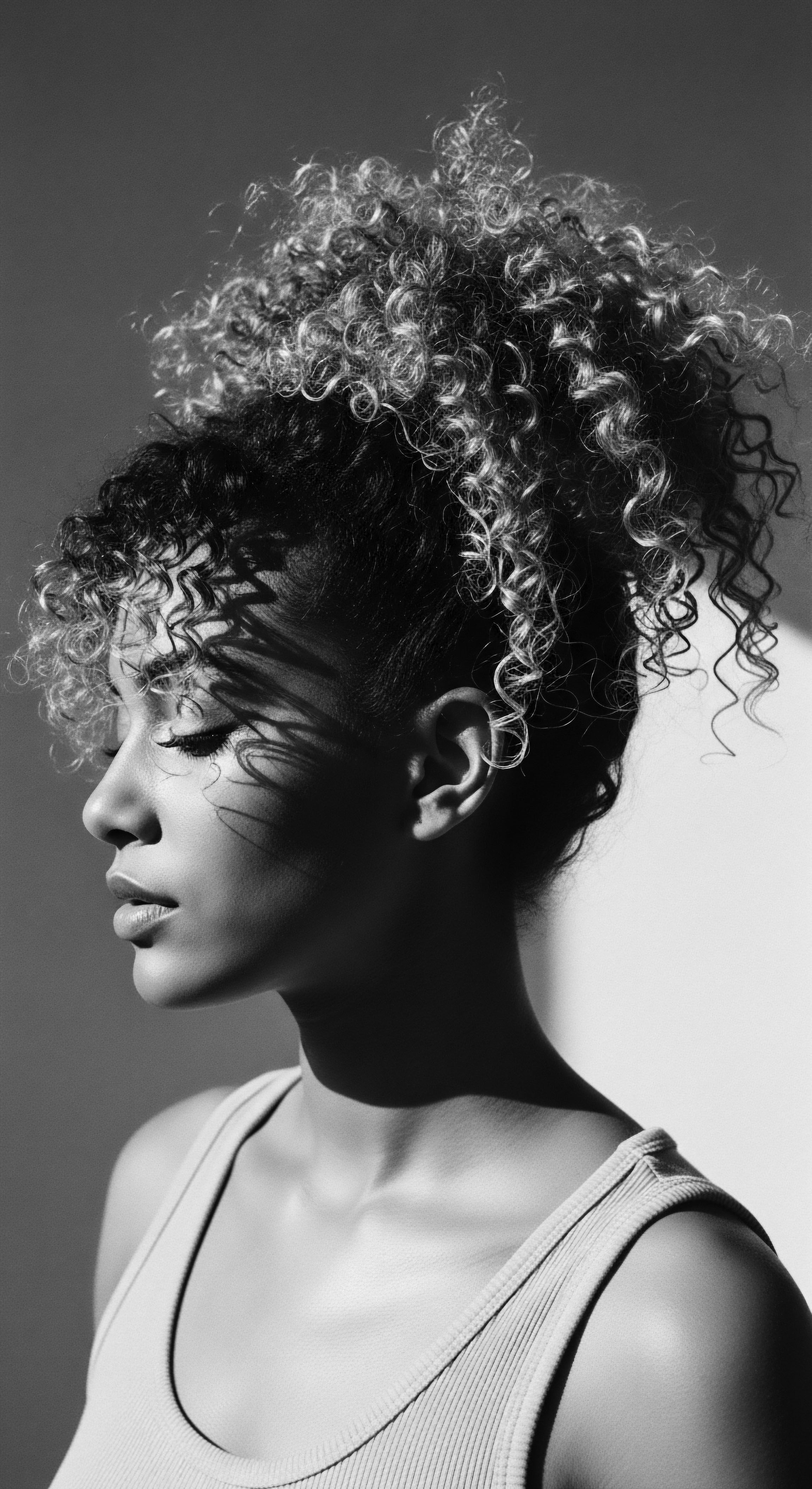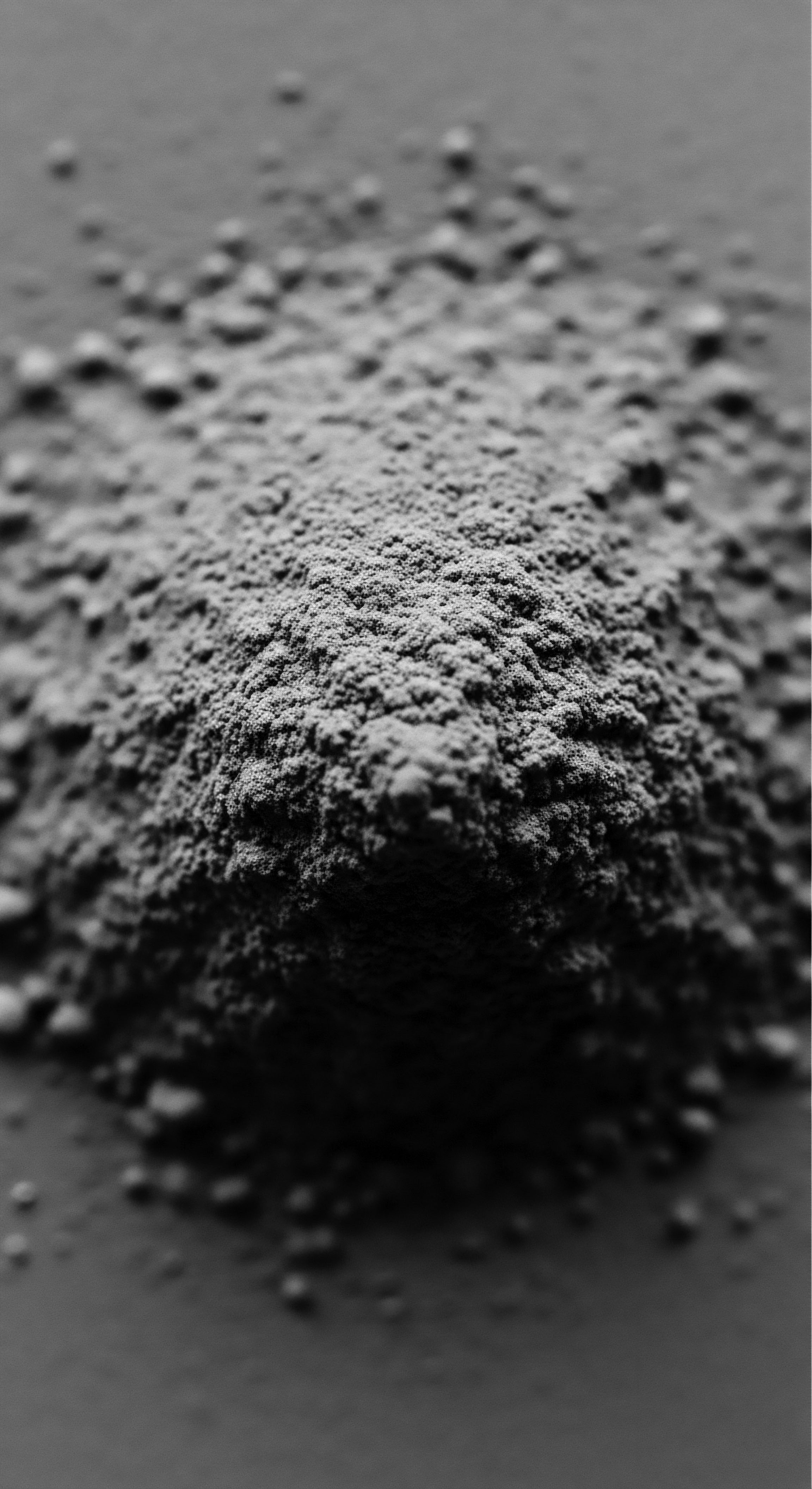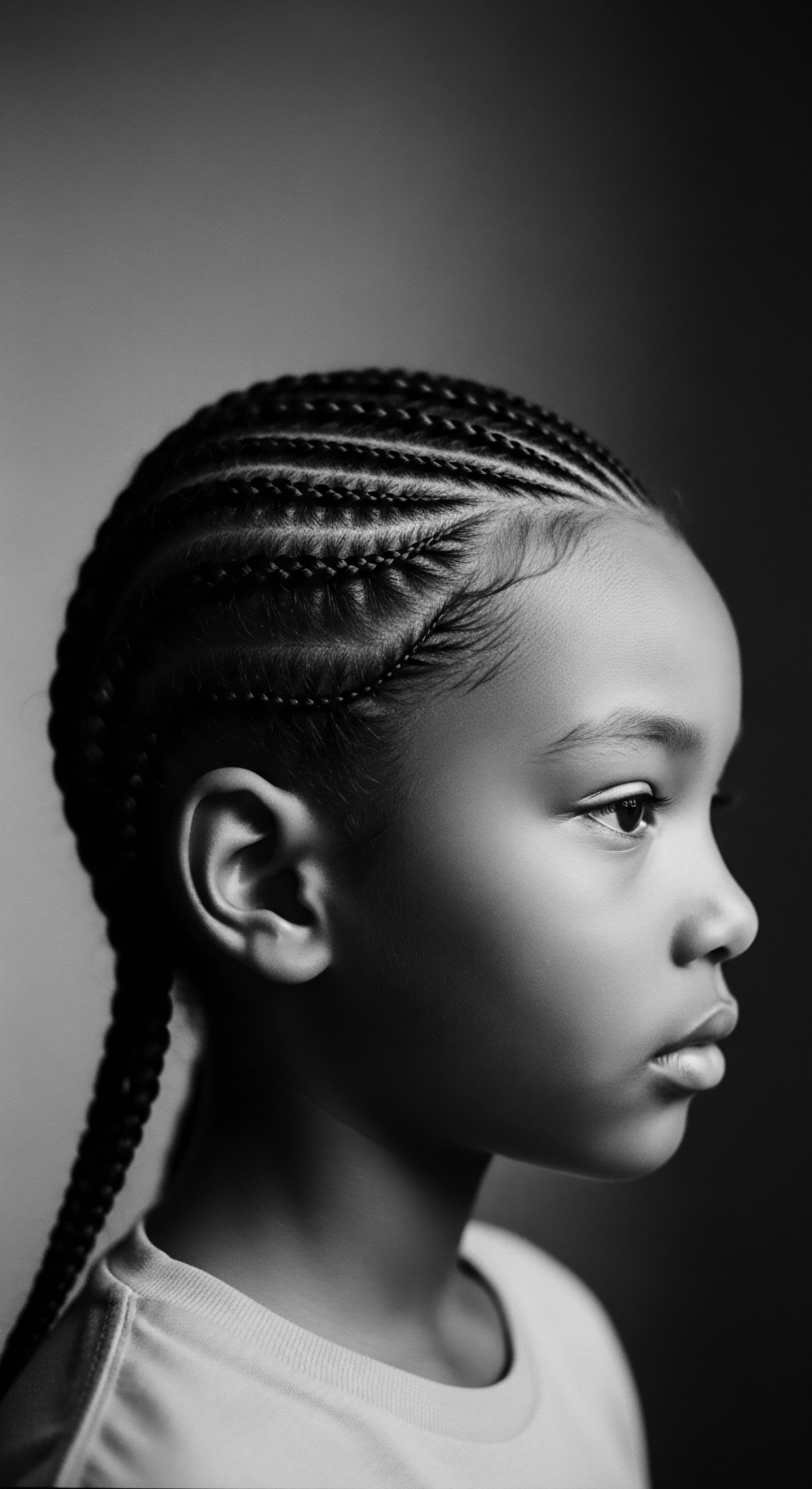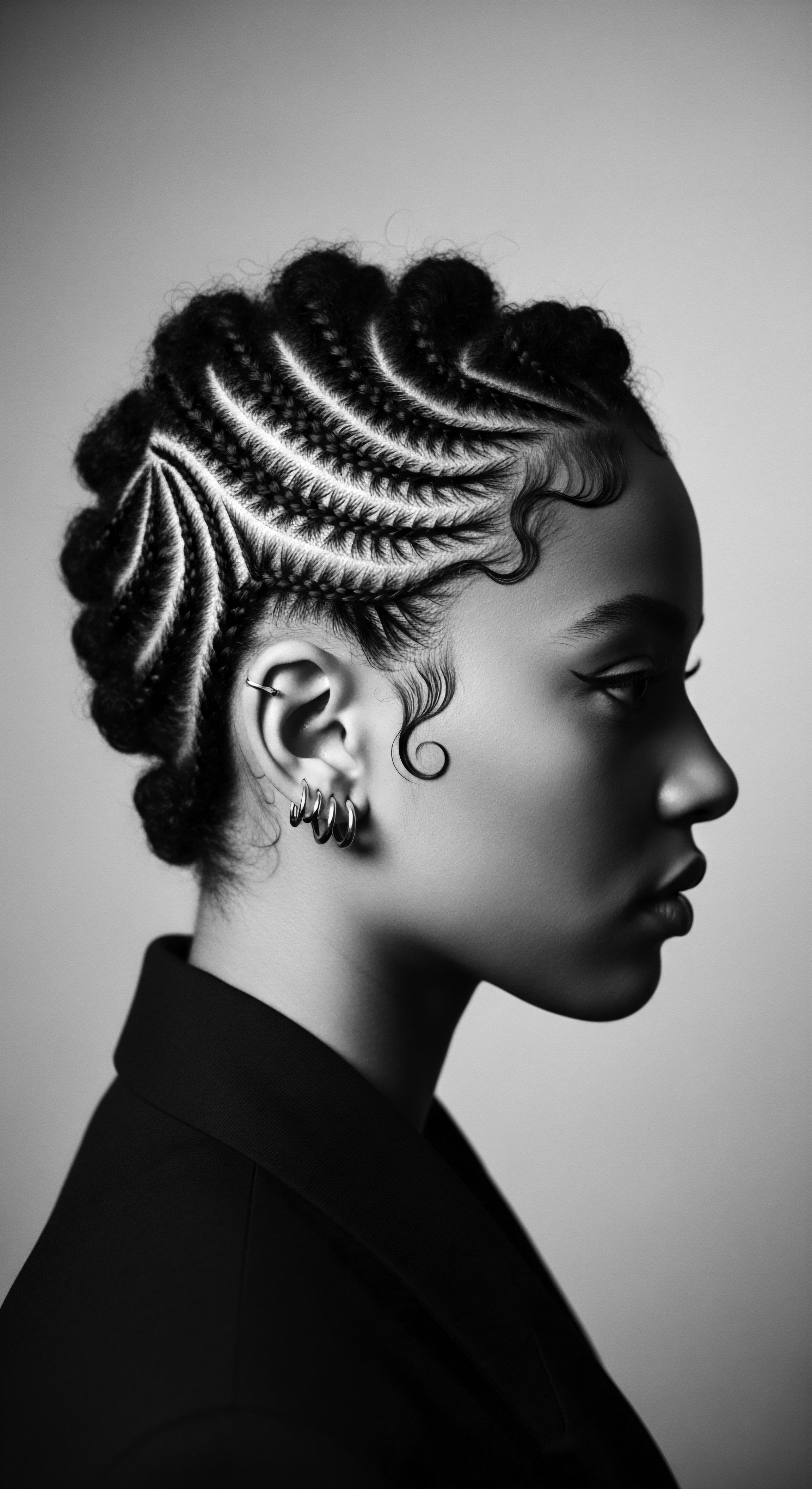
Fundamentals
Within the vast archives of Roothea’s living library, where each strand tells a story and every curl holds an ancestral whisper, the concept of Cortisol Levels stands as a vital entry. It is not merely a biological measurement, but a silent narrator of our experiences, deeply entwined with the legacy of textured hair. At its simplest, Cortisol is a hormone, often spoken of as the body’s primary stress responder. It emerges from the adrenal glands, small, cap-like organs resting atop the kidneys.
Its purpose is a primal one ❉ to ready the body for action in moments of perceived threat. When danger loomed for our forebears, whether a sudden predator or a scarcity of resources, Cortisol surged, sharpening senses, boosting energy, and preparing the musculature for flight or confrontation. This ancient mechanism, designed for acute, fleeting stressors, remains active within us today, though the threats have changed.
The immediate physiological meaning of Cortisol’s presence is a shift in bodily resources. Blood sugar elevates, supplying quick energy to muscles. Non-essential functions, like digestion or growth, momentarily recede, allowing the body to dedicate its full attention to the perceived crisis. For a brief period, this response is protective, a biological shield.
However, when this state of heightened alert persists, when the wellspring of stress does not recede, Cortisol levels remain elevated, creating a cascade of effects throughout the entire system. This prolonged elevation is where the connection to our textured hair heritage becomes particularly poignant, for the bodies of our ancestors, and indeed our own, have often been subjected to enduring stressors that extend beyond momentary peril.
The fundamental explanation of Cortisol’s role extends to its influence on nearly every cell, including those responsible for hair growth. While not immediately obvious, the health of our hair, especially the resilient, often misunderstood coils and kinks that define textured hair, is intrinsically linked to the internal environment shaped by hormonal balance. A gentle, harmonious internal state permits hair follicles to flourish, drawing sustenance and encouragement from a body at ease.
Conversely, a body perpetually braced for an unseen adversary, awash in a continuous stream of Cortisol, diverts energy away from the meticulous process of hair creation. This foundational understanding lays the groundwork for appreciating how the burdens of history, the struggles of the diaspora, and the daily pressures of existence can manifest even in the very fibers of our hair.
Cortisol, the body’s stress hormone, acts as a primal alarm system, profoundly influencing hair health, especially for textured hair, by diverting vital resources during prolonged periods of tension.

Echoes from the Source ❉ Cortisol and Ancient Being
Long before modern science offered its explanations, ancestral communities possessed an intuitive understanding of the body’s responses to strain, even if they lacked the precise nomenclature of endocrinology. Their care rituals, often steeped in reverence for the natural world and community bonds, implicitly addressed the very conditions that we now associate with elevated Cortisol. Consider the communal hair-braiding sessions, the rhythmic chants, the shared stories under the ancestral skies.
These were not merely acts of adornment; they were deeply restorative practices, collective moments of respite that surely helped to temper the body’s stress response. The sense of belonging, the physical touch, the quiet contemplation – these elements counteracted the isolating effects of fear or hardship, allowing the nervous system to settle.
The meaning of Cortisol in these ancient contexts was perhaps understood as a disharmony, an imbalance brought on by external pressures. The traditional healers and elders, the keepers of ancestral wisdom, sought not just to alleviate physical symptoms but to restore a holistic sense of equilibrium. Their remedies, often involving calming herbs, soothing massages, and spiritual practices, aimed to bring the individual back into alignment with their inner rhythms and the rhythms of the earth.
This historical perspective offers a vital counterpoint to purely clinical definitions, reminding us that the body’s responses, including hormonal ones, are deeply interwoven with our social, spiritual, and environmental landscapes. The hair, then, became a visible barometer of this internal state, its vitality a testament to the efficacy of these ancestral ways of calming the inner storms.
- Communal Braiding ❉ A collective act of care and connection, reducing feelings of isolation and stress.
- Herbal Infusions ❉ Calming botanicals used in teas or scalp rinses to soothe the nervous system.
- Rhythmic Drumming ❉ A meditative practice that could induce states of relaxation, altering physiological responses.

Intermediate
Moving beyond the foundational understanding, the intermediate interpretation of Cortisol Levels within Roothea’s framework delves into its more intricate relationship with the very structure and life cycle of textured hair. The hair follicle, a miniature organ embedded in the scalp, is a highly sensitive entity, exquisitely attuned to the body’s internal milieu. It undergoes a cyclical process of growth (anagen), regression (catagen), and rest (telogen).
Cortisol, when persistently elevated, can disrupt this delicate choreography, signaling to the follicles that resources are scarce and that growth is a luxury the body cannot currently afford. This is not merely a hypothetical scenario; it is a lived reality for many whose ancestral paths have been marked by systemic pressures.
The physiological significance of sustained high Cortisol levels for hair is multifaceted. It can shorten the anagen phase, prematurely pushing hairs into the catagen (transitional) and telogen (resting) phases. This leads to increased shedding and a reduction in overall hair density. Moreover, Cortisol influences the micro-environment of the scalp, potentially impacting blood flow to the follicles and altering the composition of sebum, the natural oil that lubricates the hair and scalp.
For textured hair, which is inherently more prone to dryness and breakage due to its unique structure, these subtle shifts can have pronounced effects, exacerbating existing vulnerabilities and making it more challenging to retain length and health. The hair, in this context, becomes a silent witness to the internal battles waged against stress.
Chronic Cortisol elevation can prematurely shorten the growth phase of textured hair, leading to increased shedding and reduced density, reflecting the body’s internal struggle with persistent stress.

The Tender Thread ❉ Cortisol and the Hair’s Journey
Consider the journey of Black and mixed-race hair through centuries of challenge and adaptation. From the transatlantic crossing, a period of unimaginable trauma and deprivation, to the ongoing realities of systemic oppression and microaggressions, the bodies of those with textured hair have often been in a state of heightened alert. This historical context is not a mere backdrop; it is an active force shaping the very biology of our communities.
The enduring stress, passed down through generations, has left its mark not just on mental well-being but on physiological responses, including the regulation of Cortisol. The very act of hair care, therefore, has often transcended mere aesthetics, evolving into a ritual of resilience, a quiet rebellion against conditions that sought to diminish.
Traditional hair care practices, passed down through oral tradition and lived experience, often held within them an intuitive understanding of this mind-body connection. The slow, deliberate process of oiling, detangling, and styling was, and remains, a meditative act. It provides moments of stillness, of focused attention, allowing the nervous system to downshift. The ingredients used – natural oils, herbs, and butters – were not chosen arbitrarily.
Many possess properties known today to be soothing and anti-inflammatory, subtly counteracting the internal turmoil. This interplay between the external act of care and the internal physiological response highlights the deep wisdom embedded in ancestral practices, wisdom that predates the scientific explanation of Cortisol.
The meaning of these rituals, when viewed through the lens of Cortisol, takes on an even deeper resonance. They represent a heritage of self-preservation, a collective knowledge of how to soothe the body and spirit in the face of adversity. The act of tending to one’s hair, particularly textured hair, becomes a powerful affirmation of self-worth and identity, a counter-narrative to external pressures that often seek to devalue. This isn’t just about managing hair; it’s about managing the legacy of stress, finding solace and strength in inherited traditions.
- Pre-Colonial African Practices ❉ Rituals centered on communal grooming, natural emollients, and protective styles, implicitly mitigating environmental and social stressors.
- Diasporic Adaptations ❉ The preservation and evolution of hair care techniques under conditions of extreme duress, transforming care into a defiant act of cultural continuity.
- Modern Wellness Integration ❉ Contemporary textured hair care increasingly incorporates mindfulness and stress-reduction techniques, recognizing the ancestral wisdom of holistic well-being.
| Aspect of Hair Health Hair Growth & Density |
| Traditional Understanding/Practice Emphasis on protective styling and gentle handling to "keep the hair growing long and strong." |
| Modern Scientific Link (Cortisol) Chronic Cortisol shortens anagen phase, leading to premature shedding and reduced hair density. |
| Aspect of Hair Health Scalp Health |
| Traditional Understanding/Practice Use of soothing herbal rinses and natural oils to "calm the scalp" and promote healthy growth. |
| Modern Scientific Link (Cortisol) Cortisol can trigger inflammation and alter sebum production, affecting the scalp microbiome and barrier function. |
| Aspect of Hair Health Hair Breakage & Brittleness |
| Traditional Understanding/Practice Belief that stress or "worry" makes hair "fall out" or "become weak"; remedies focused on nourishing. |
| Modern Scientific Link (Cortisol) High Cortisol can indirectly lead to poorer nutrient delivery to follicles and increased oxidative stress, compromising hair integrity. |
| Aspect of Hair Health The enduring efficacy of ancestral hair care traditions often finds validation in contemporary understanding of hormonal responses, particularly Cortisol's influence. |

Academic
The academic meaning of Cortisol Levels within the context of textured hair heritage necessitates a deep exploration into the complex interplay of endocrinology, epigenetics, and the socio-historical realities that have shaped the Black and mixed-race experience. Cortisol, a glucocorticoid, exerts its influence through glucocorticoid receptors (GRs) found in virtually all tissues, including the dermal papilla cells and outer root sheath cells of the hair follicle. Its primary function is to regulate metabolism, immune responses, and inflammation, yet its dysregulation under chronic stress initiates a cascade of detrimental effects on the pilosebaceous unit. This intricate biological mechanism, while universal, acquires a unique and profound significance when examined through the lens of inherited and persistent stressors.
From an academic vantage, the prolonged elevation of Cortisol, often a consequence of allostatic load, directly impacts the hair cycle. It can induce a premature shift from the anagen (growth) phase to the catagen (transitional) phase, leading to telogen effluvium, a common form of hair loss characterized by diffuse shedding. Beyond this, Cortisol can modulate the expression of various growth factors and cytokines within the hair follicle, thereby disrupting the finely tuned cellular signaling required for robust hair production.
The immune-modulating effects of Cortisol also play a role; chronic stress can suppress immune surveillance, potentially exacerbating inflammatory scalp conditions that disproportionately affect textured hair, such as central centrifugal cicatricial alopecia (CCCA) or seborrheic dermatitis. The scientific delineation of Cortisol’s influence thus provides a biochemical framework for understanding the lived experiences of hair fragility and loss observed across generations.

The Unbound Helix ❉ Epigenetics, Stress, and Hair Legacy
The true depth of Cortisol’s meaning, particularly for textured hair, extends into the realm of epigenetics. This field investigates how environmental factors can alter gene expression without changing the underlying DNA sequence. Mounting evidence suggests that chronic stress, and the sustained high Cortisol levels it produces, can induce epigenetic modifications, such as DNA methylation or histone acetylation, which may be transmitted across generations.
These modifications can influence how an individual’s body responds to stress, potentially predisposing subsequent generations to a heightened stress response or altered physiological baselines. This offers a powerful explanation for why the descendants of historically marginalized communities might exhibit different health outcomes, including those related to hair and scalp vitality, even in the absence of direct, overt stressors in their immediate environment.
A compelling, though less commonly cited, example that powerfully illuminates this connection comes from the field of public health and historical trauma. Research on the physiological impacts of slavery and its aftermath, while not always directly measuring Cortisol in historical populations, consistently points to the enduring legacy of stress. For instance, a study by Geronimus et al. (2006) , focusing on the concept of ‘weathering,’ describes how African American women experience accelerated health deterioration and chronic disease onset at younger ages compared to their white counterparts, attributing this to cumulative exposure to socioeconomic disadvantage and chronic stress.
While this study does not directly measure hair, the underlying mechanism of ‘weathering’ – characterized by prolonged activation of stress responses, including the HPA axis and elevated Cortisol – provides a powerful conceptual link. If the body is perpetually ‘weathered’ by stress, diverting resources and accelerating cellular aging, it stands to reason that non-essential but highly visible aspects like hair growth and retention would be significantly compromised. The very integrity of the hair, therefore, becomes a somatic archive of historical duress, a tangible manifestation of a legacy of struggle that is biologically encoded.
This perspective reframes hair care for textured hair not just as a cosmetic endeavor but as an act of profound biological and cultural repair. Traditional practices, often dismissed as anecdotal, take on new academic validity when viewed as ancestral epigenetic interventions. The rhythmic motion of scalp massage, the application of nutrient-rich oils derived from indigenous plants, the communal bonding during styling sessions – these are not merely pleasant customs.
They are potent acts of downregulating the stress response, fostering parasympathetic nervous system activation, and potentially mitigating the epigenetic marks of chronic stress. They represent a collective, embodied knowledge of how to counter the physiological burdens of historical adversity.
Epigenetic research suggests that the sustained Cortisol elevation from chronic historical stress may leave transgenerational marks, impacting textured hair vitality and underscoring the deep biological wisdom in ancestral care practices.

The Interconnected Incidences ❉ Cortisol, Identity, and Hair
The academic discussion of Cortisol Levels also intersects with the sociology of identity and the psychology of self-perception. For individuals with textured hair, particularly those within Black and mixed-race diasporas, hair has historically been a contested terrain, subject to external scrutiny, imposed beauty standards, and even policies of suppression. The stress arising from hair discrimination, the pressure to conform to Eurocentric ideals, or the emotional labor of navigating hair-related microaggressions, constitutes a chronic psychosocial stressor.
This form of stress, often insidious and pervasive, contributes to the allostatic load and, by extension, to elevated Cortisol levels. The biological response to this societal pressure then feeds back into the individual’s experience, potentially manifesting as hair breakage, thinning, or slowed growth, thereby reinforcing negative self-perceptions and perpetuating a cycle of anxiety surrounding hair.
The meaning of Cortisol here transcends pure biology; it becomes a biomarker of systemic injustice. The hair, in its very resilience or vulnerability, reflects the enduring fight for self-acceptance and cultural affirmation. Academic inquiry into this area requires an interdisciplinary approach, drawing from psychoneuroimmunology, cultural studies, and historical analysis to paint a complete picture. Understanding the long-term consequences of this interconnectedness is vital for developing truly holistic wellness strategies that honor both the biological and socio-cultural dimensions of textured hair care.
It necessitates a recognition that ancestral practices of hair care were not just about beautification, but about survival, resistance, and the preservation of identity in the face of profound adversity. The deliberate choice to wear one’s hair in its natural state, for instance, can be a powerful act of defiance against historical pressures, potentially reducing a significant source of chronic stress and allowing the body, and the hair, to reclaim a state of calm.
- Psychosocial Stressors ❉ Hair discrimination and Eurocentric beauty standards contribute to chronic stress and elevated Cortisol in textured hair communities.
- Biological Manifestation ❉ This stress can lead to hair fragility, thinning, and compromised growth, mirroring the body’s internal distress.
- Ancestral Resilience ❉ Traditional hair care rituals and natural hair movements serve as powerful counter-narratives, promoting self-acceptance and reducing stress.
| Era/Context Transatlantic Enslavement (17th-19th Century) |
| Primary Stressors (Contributing to Cortisol Elevation) Extreme physical duress, malnutrition, psychological trauma, loss of cultural identity. |
| Observed Hair Manifestations (Linked to Cortisol) Significant hair loss, thinning, and changes in texture due to severe physiological stress and lack of proper care. |
| Era/Context Post-Emancipation/Jim Crow (Late 19th-Mid 20th Century) |
| Primary Stressors (Contributing to Cortisol Elevation) Systemic racism, economic hardship, violence, pressure to conform to Eurocentric beauty norms (e.g. chemical straightening). |
| Observed Hair Manifestations (Linked to Cortisol) Hair damage, breakage, and scalp issues from harsh chemical treatments; potential stress-related hair loss. |
| Era/Context Modern Era (21st Century) |
| Primary Stressors (Contributing to Cortisol Elevation) Hair discrimination in schools/workplaces, microaggressions, pressure from media, intergenerational trauma. |
| Observed Hair Manifestations (Linked to Cortisol) Ongoing challenges with hair retention, stress-induced shedding (telogen effluvium), and inflammatory scalp conditions. |
| Era/Context The historical continuum of stress faced by Black and mixed-race communities underscores the enduring impact on textured hair health, with Cortisol acting as a key mediator. |

Reflection on the Heritage of Cortisol Levels
As we draw our exploration of Cortisol Levels to a close within Roothea’s living library, we are left with a profound appreciation for its multifaceted nature, particularly as it intersects with the enduring heritage of textured hair. It becomes clear that Cortisol is more than a mere biochemical marker; it is a resonant echo of our ancestors’ resilience, a silent witness to the historical burdens carried within the very cells of our bodies. The ebb and flow of this hormone tell a story not only of individual stress but of collective struggle and adaptation, a narrative etched into the very fibers of our coils and kinks. The journey from elemental biology to the complexities of epigenetic inheritance reveals a continuous thread of wisdom, linking ancient practices of care to contemporary scientific understanding.
The meaning of Cortisol, when viewed through the Soul of a Strand ethos, compels us to reconsider our relationship with our hair. It invites us to see hair care not as a superficial act, but as a deeply spiritual and ancestral practice, a quiet revolution against the lingering shadows of historical duress. Each moment of gentle detangling, each application of a nourishing balm, each protective style chosen with intention, becomes an act of downregulating the inherited stress response.
It is a conscious decision to foster an environment where hair can not just survive, but truly flourish, honoring the legacy of those who preserved traditions of care under unimaginable circumstances. The hair, then, becomes a powerful symbol of defiance and healing, a testament to the enduring strength of a people.
The unbound helix of our textured hair, therefore, is not merely a biological structure; it is a living archive, holding within its intricate patterns the wisdom of generations. Understanding Cortisol’s influence, from the ancient hearths where stress was soothed by communal touch to the modern scientific labs exploring epigenetic markers, deepens our reverence for this heritage. It reminds us that true wellness for textured hair extends beyond product ingredients, reaching into the very core of our being, our history, and our collective journey towards peace and flourishing.
In tending to our hair with mindfulness and respect, we are, in essence, tending to the legacy of our ancestors, allowing their resilience to shine through every vibrant, healthy strand. This ongoing dialogue between science and ancestral wisdom offers a guiding light, affirming that the path to vibrant hair health is, indeed, a path towards holistic well-being, deeply rooted in our sacred past and looking brightly towards a future of unbound self-acceptance.

References
- Geronimus, A. T. Hicken, M. Keene, S. D. & Bound, J. A. (2006). Weathering and age patterns of allostatic load scores among blacks and whites in the United States. American Journal of Public Health, 96(5), 826-833.
- Slominski, A. Wortsman, J. & Tobin, D. J. (2005). The corticotropin-releasing hormone (CRH) system in the skin. Journal of Investigative Dermatology, 124(5), 903-914.
- Paus, R. & Cotsarelis, G. (1999). The biology of hair follicles. New England Journal of Medicine, 341(7), 491-497.
- Dhabhar, F. S. (2023). Stress-induced redistribution of immune cells—From barracks to battlefields—A review of psychoneuroimmunology. Brain, Behavior, and Immunity, 107, 240-252.
- Branch, N. (2020). Hair Story ❉ Untangling the Roots of Black Hair in America. St. Martin’s Press.
- Byrd, A. D. & Tharps, L. D. (2014). Hair Matters ❉ Beauty, Power, and the Politics of Hair in African America. New York University Press.
- Turner, C. W. & Spencer, B. (1988). The African American Hair Book ❉ A Complete Guide to Styling, Health, and History. Dutton.
